Smart Shopper: How to Judge Antique Furniture Quality
http://decor-ideas.org 11/23/2013 20:20 Decor Ideas
Whether you're a veteran antiques shopper or a relative newbie, you've probably been stung by the same nagging doubts: Is the piece I'm buying any good? And am I paying a fair price?
On a certain level, the questions are moot. If you love the item and the pleasure it would give you is proportional to the cost, then you should buy it.
But if the item is costly and you're worried about whether it's worth the asking price, there are some simple tests you can perform to assess its quality. According to Seattle antiques dealer Richard Rhoda, 90 percent of defects can be detected by a layman, if he or she is willing to spend 30 minutes inspecting a potential purchase.
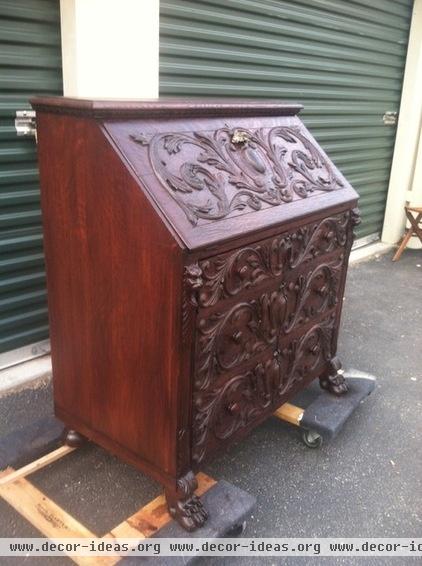
Take a good look. Move the piece away from walls and other items so you can inspect all four sides and the bottom. Examine the item under bright light (always carry a flashlight when you go antiquing), or ask the proprietor if you can take the piece outside (weather permitting) to examine it under natural light. If the dealer balks, Rhoda says, “walk the other way.”
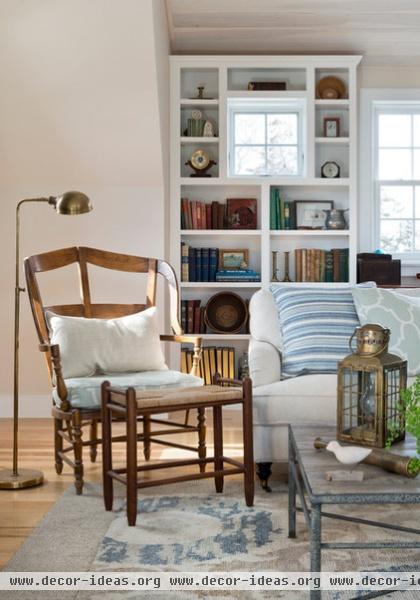
Make sure it's solid. If you're buying a chair, sit down and push your body back and forth. A chair that wobbles and moves with your body is loose and needs to be reglued. If you're looking at a table or bureau, set your hand on a corner and shake the piece; it shouldn't wobble.
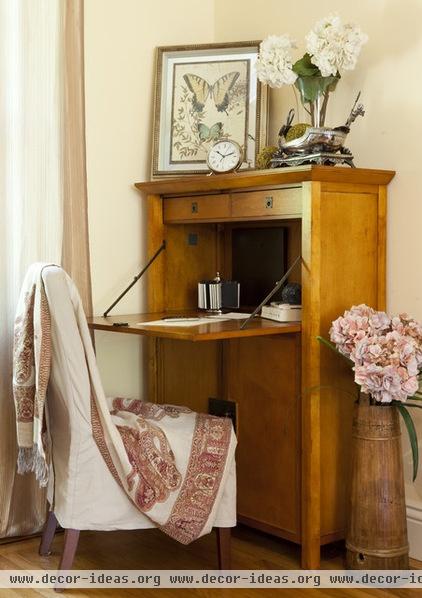
Weigh your decision. If the piece isn't too heavy, try lifting it. A heavier weight is a sign that the item is well constructed and is built from higher-quality woods. A mahogany carcass covered with a thick veneer will weigh significantly more than a frame built of pine and covered with a thin layer of veneer.
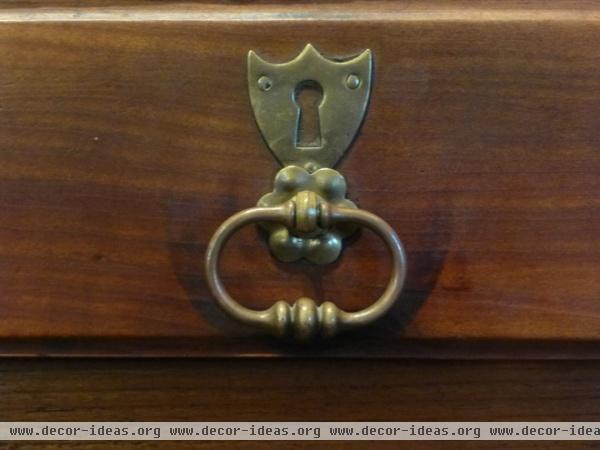
Look for signs of age. Are there natural signs of wear on the finish? An old piece of furniture will have dirt in crevices or in spots that are hard to clean. The drawers will be worn from years of friction, and telltale wear will be visible around knobs and handles — like the black mark left by this swinging drawer pull.

If you don't see signs of wear, that may indicate that the piece is not really old, or that it's been refinished. While the latter isn't necessarily bad (if it's been done well), refinishing will usually lower the item's value. Check inside and underneath for telltale dribbles of stain, suggesting a sloppy refinishing job.
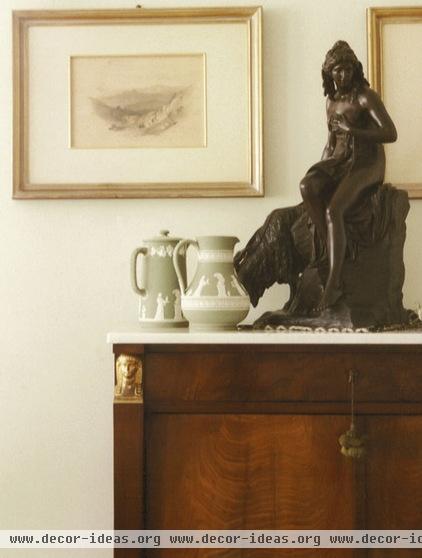
Go with the grain. Take a close look at the veneer. If the wood grain is interesting and of high quality, the piece was probably costly in its day and made with care, and therefore remains a worthwhile investment.
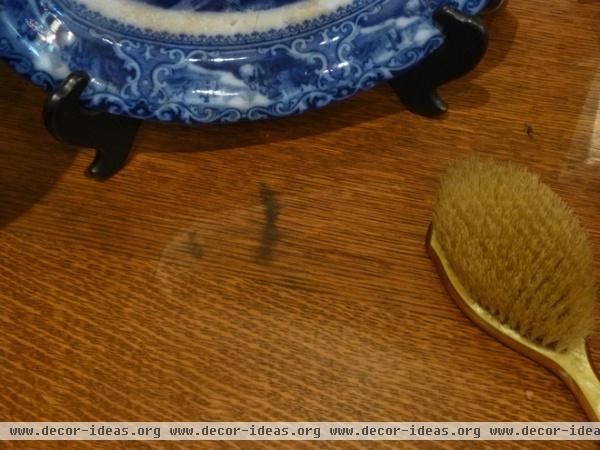
Consider the finish. The exterior should be a uniform color, except for variations that would naturally occur due to everyday use and exposure to the elements. Scars and surface blemishes are acceptable, but burn marks can’t be removed or painted over without cutting out that section of wood, so steer clear of antiques with burn marks unless you can live with them. If you're spending more than $300 on an antique, it shouldn't have any visible nails; their presence indicates a sloppy repair job.
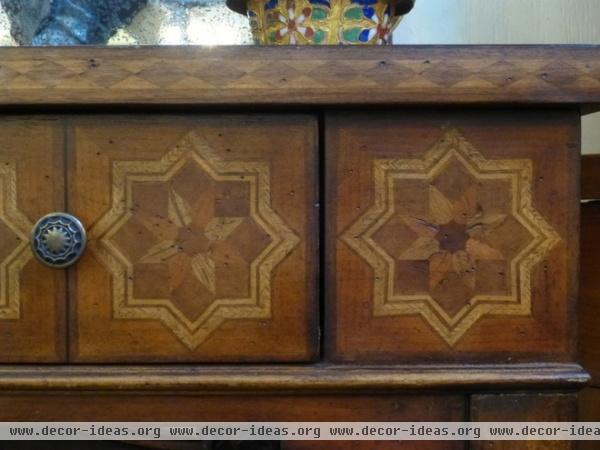
Is anything missing? Look for broken or missing pieces of veneer, or sections that are a different color — signs that the veneer has been poorly patched. Make sure that decorative inlays or applied carvings aren't missing any pieces.
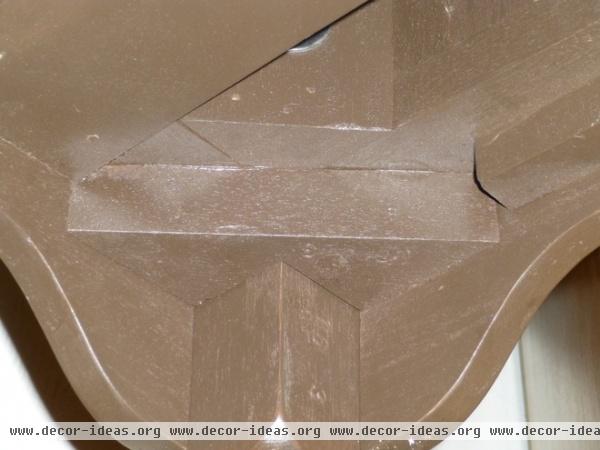
Check inside, under and behind. The interior or back of the piece might be a different color or finish from the surroundings, but it should be consistent; irregularities indicate that the piece has been repaired. Study the corner blocks (also called glue blocks) beneath a chair, cabinet or table (as shown here). The blocks should be the same color as the surrounding wood; variations in color or texture indicate that the blocks were replaced.
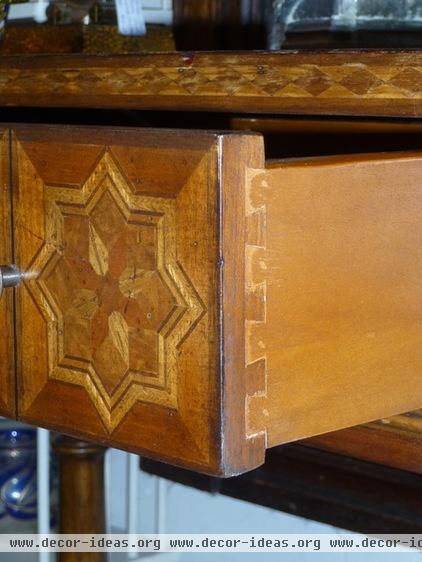
Study the drawers. The drawers should slide in and out without resistance or wobbling. Most furniture drawers made before 1900 will have dovetail joints. Pieces made after the advent of the machine age in the 1830s or '40s will have precise dovetails; those made prior to that will have dovetail joints that appear uneven and handmade. Joints that are simply butted together suggest later construction or inferior workmanship.
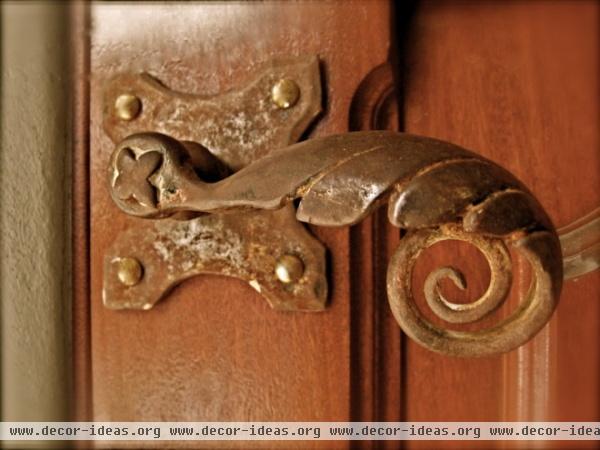
Is the hardware original? Are any of the knobs or drawer pulls missing? Is there a telltale shadow or outline in a different shape, suggesting the hardware was replaced? Take a look at the back of the door or drawer: Can you see old drill holes, holes that have been plugged or modern screws and bolts? All of these may indicate that the original hardware was replaced. Replacements aren't necessarily bad, as long as the new hardware fits the style and quality of the piece.
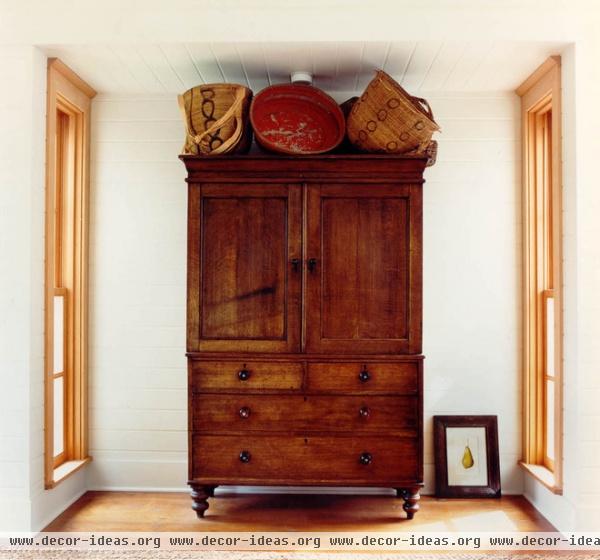
Don't be afraid to ask these questions:
• Will the antiques dealer guarantee the piece as advertised? If so, a description of the furniture should be written on your receipt. If the dealer won't consent to that, he or she may be uncertain about the item's provenance.
• Ask the dealer if any repairs have been done to the piece. Repairs aren't necessarily a drawback, but you should know what you're getting before you buy.
• Look the merchant in the eye and ask if the piece is a good value for the money. How the question is received is more important than the answer itself. If the dealer is offended or avoids your gaze, chances are that it’s not a good value.
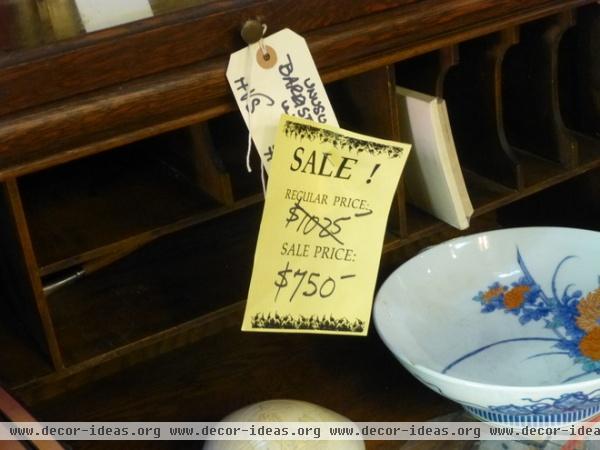
Ask for a second opinion. If you're uncertain about a piece, and it's costly, consider getting a second opinion from a friend who is knowledgable about antiques and whose taste you trust. Ask the dealer to put the piece on hold for you until you return, and offer a precise deadline for your return. If he or she won't hold the item until then, ask yourself how you'd feel if the item weren't there when you came back. If the heartbreak you’d experience would exceed the disappointment you’d feel paying more for the piece than it’s worth, then buy it now.

A final caution. Despite what you've seen on Antiques Roadshow, buying antiques is not a reliable way to get rich quick. Don't purchase a piece as an investment unless you're either a professional dealer or a savvy collector. While you can usually recoup the cost of a fine antique, the possibility that it's an undiscovered treasure worth 10 times what you paid for it is extremely unlikely.
More: 7 Favorite Vintage Furniture Sites
Related Articles Recommended












